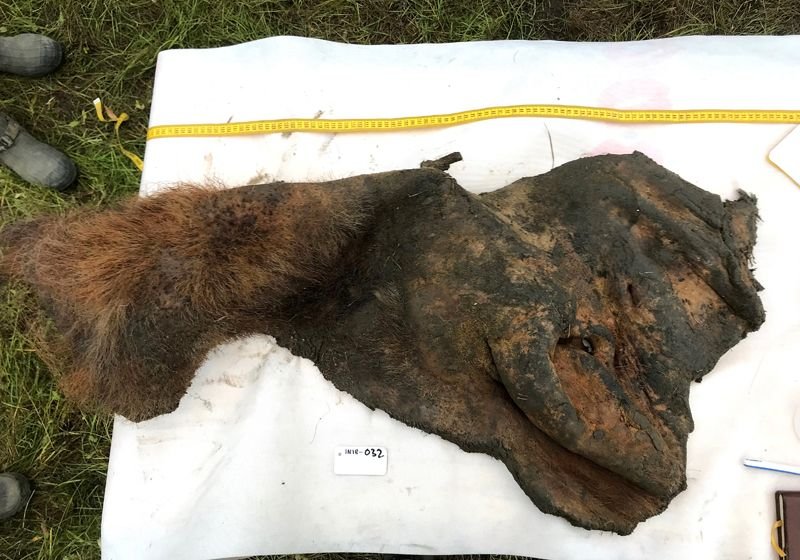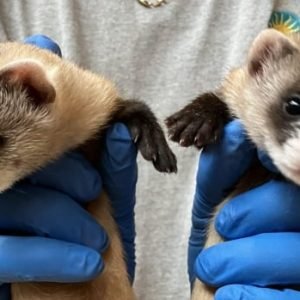
Over time, DNA can degrade into numerous short fragments that wiggle around. Eventually, the chromosome loses its original structure and genetic information to the ravages of time. However, researchers pondered whether fossil chromosomes that retained their original three-dimensional configuration existed.
To find out, an international team of researchers set off on an expedition in the frosty tundra of Siberia. In 2018, they discovered a promising, well-preserved skin sample from a giant titan of the Ice Age: a 52,000-year-old woolly mammoth.
Erez Lieberman Aiden, a molecular geneticist at Baylor College of Medicine, who works on developing methods for 3D sequencing.
Erez Lieberman Aiden
Using a high-throughput technique to capture chromatin conformation (Hi-C) and DNA sequencing, molecular geneticists Erez Lieberman Aiden and Olga Dudchenko at Baylor College of Medicine reassembled the three-dimensional structure of DNA and its genome—the first reconstruction of its kind.1 These findings, published in Cell, uncovered new biology and ushered in an exciting new chapter in paleogenomics.
Sampling from Fossil Chromosomes to Uncover Genetic Insights
Typically, ancient DNA fragments yield short snippets of DNA and provide an incomplete picture of the genomic puzzle. However, the woolly mammoth skin sample showed promise. Dudchenko observed that the sample was exceptionally well-preserved from macroscopic down to nanometer scales, with no molecular movement, and could potentially contain a more complete genomic picture.
To explore the 3D morphology of the existing chromosomes, Lieberman Aiden modified an in situ Hi-C protocol, dubbed PaleoHi-C.2 This technique, adapted for ancient samples and combined with DNA sequencing, enabled the researchers to map the chromosome features, assemble a reference genome, and determine activation patterns across genes.

Olga Dudchenko, a molecular geneticist at Baylor College of Medicine, studies how genomes fold in 3D in modern and nonmodern model species.
Olga Dudchenko
With this data, the team assembled the first 3D reconstruction of the woolly mammoth’s genome, which had 28 chromosomes; the order of genes was very similar to that of the Asian elephant. Then, upon analyzing the X chromosomes, they confirmed the specimen was a female woolly mammoth. They also observed inactive X chromosome (Xi) superdomains, a pattern resembling the bipartite architecture seen in humans and mice. However, to the researchers’ surprise, they uncovered new biology. Dudchenko noted that the mammoth “was a bit of an overachiever”, as its Xi exhibited a tetradic architecture. This pattern is also seen in modern elephants.
Next, they compared the degree of transcriptional activity of DNA between mammoth and elephant tissue. “We saw interesting differences in the genes related to hair follicle development and, more broadly, hair maintenance,” Dudchenko remarked.
Surviving the Permafrost for 52,000 years in a Glass-like State
The researchers pondered the miracle behind this preservation since historically there is little relevant data to understand the physics of this sample enduring the permafrost. Lieberman Aiden realized that the team needed to shift their mindset to understand this better. “Woolly mammoths were hunted as delicious food, not just biosamples,” he explained.
When meat is left out it quickly spoils, and its genome architecture degrades. However, since ancient times, people have used cooling and dehydration to preserve food. The physics of this trick is well understood, accompanied by a large amount of food-related research. During this process, removing water increases the sample’s viscosity, halting molecular diffusion, and preserving the molecules in their original locations.
“Essentially, we’re dealing with a dehydrated piece of mammoth skin, or mammoth jerky,” said Dudchenko. “We proposed that dehydration led to a glass transition of chromatin that arrested molecular movement of DNA fragments, which we dubbed chromatin glass, or ‘chromoglass’.”
The researchers tested a bunch of freeze-dried jerky in the lab and examined it to see how well the 3D genome architecture was preserved in the jerky. Since a piece of dehydrated tissue left at room temperature remained intact after a year, the researchers upped the ante. They subjected the jerky to various stressors: they ran it over with a car, shot it with a shotgun, rehydrated it in an acidic solution, immersed it in liquid nitrogen, and even had a former starting pitcher for the Houston Astros throw a fastball at it. Despite these tests, the chromatin architecture in the jerky remained incredibly robust.
Implications of Chromoglass and Understanding the Ancient World
According to Lieberman Aiden and Dudchenko, they got lucky in finding a sample that was complementary to their sequencing approach. By detecting meaningful traces of gene activity, the researchers expressed optimism in using their robust approach for similarly preserved ancient samples. “This opens new possibilities for conducting functional studies that were previously impossible,” said Dudchenko. Lieberman Aiden added, “This special form of ancient DNA, which preserves the ancient chromosomes, promises to be a new window and kind of evidence into the history of life on this earth.”






